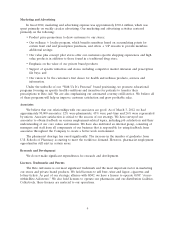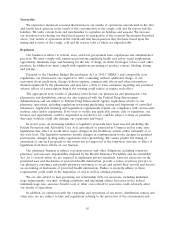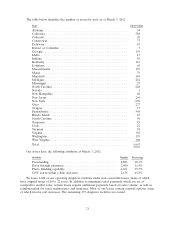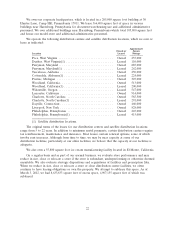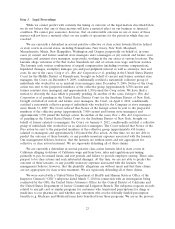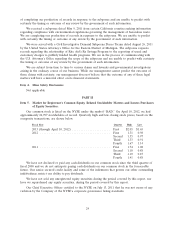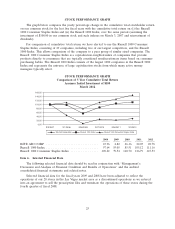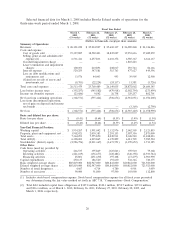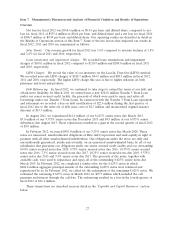Rite Aid 2012 Annual Report Download - page 17
Download and view the complete annual report
Please find page 17 of the 2012 Rite Aid annual report below. You can navigate through the pages in the report by either clicking on the pages listed below, or by using the keyword search tool below to find specific information within the annual report.Consolidation in the healthcare industry could adversely affect our business, financial condition and results of
operations.
Many organizations in the healthcare industry, including pharmacy benefit managers, have
consolidated or are in the process of consolidating, such as the recent merger of Express Scripts and
Medco Health Solutions, to create larger healthcare enterprises with greater market power, which has
resulted in greater pricing pressures. If this consolidation trend continues, it could give the resulting
enterprises even greater bargaining power, which may lead to further pressure on the prices for our
products and services. If these pressures result in reductions in our prices, our business will become less
profitable unless we are able to achieve corresponding reductions in costs or develop profitable new
revenue streams. We expect that market demand, government regulation, third-party reimbursement
policies, government contracting requirements, and societal pressures will continue to cause the
healthcare industry to evolve, potentially resulting in further business consolidations and alliances
among the industry participants we engage with, which may adversely impact our business, financial
condition and results of operations.
Drug benefit plan sponsors and third party payors could change their plan eligibility criteria and further
encourage or require the use of mail-order prescriptions which could decrease our sales and reduce our
margins and have a material adverse effect on our business.
An adverse trend for drugstore retailing has been initiatives to contain rising healthcare costs
leading to the rapid growth in mail-order prescription processors. These prescription distribution
methods have grown in market share relative to drugstores as a result of the rapid rise in drug costs
experienced in recent years and are predicted to continue to rise. Mail-order prescription distribution
methods are perceived by employers and insurers as being less costly than traditional distribution
methods and are being encouraged, and, in some cases, required, by third party pharmacy benefit
managers, employers and unions that administer benefits. As a result, some labor unions and employers
are requiring, and others may encourage or require, that their members or employees obtain
medications from mail-order pharmacies which offer drug prescriptions at prices lower than we are able
to offer.
Another adverse trend for drugstore retailing has been for drug benefit plan sponsors and third
party payors to change their plan eligibility requirements resulting in fewer beneficiaries covered and a
reduction in the number of prescriptions allowed.
Mail-order prescription distribution and drug benefit plan eligibility changes have negatively
affected sales for traditional chain drug retailers, including us, and we expect such negative effect to
continue in the future. There can be no assurance that our efforts to offset the effects of mail order
and eligibility changes will be successful nor can we predict whether the recently adopted health care
reform legislation will exacerbate this risk.
The availability of pharmacy drugs is subject to governmental regulations.
The continued conversion of various prescription drugs, including the planned conversion of a
number of popular medications, to over-the-counter medications may reduce our pharmacy sales and
customers may seek to purchase such medications at non-pharmacy stores. Also, if the rate at which
new prescription drugs become available slows or if new prescription drugs that are introduced into the
market fail to achieve popularity, our pharmacy sales may be adversely affected. The withdrawal of
certain drugs from the market or concerns about the safety or effectiveness of certain drugs or negative
publicity surrounding certain categories of drugs may also have a negative effect on our pharmacy sales
or may cause shifts in our pharmacy or front end product mix.
17




